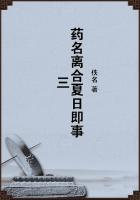Origin of power in the voltaic pile.
In one of the public areas of the town of Como stands a statue with no inscription on its pedestal, save that of a single name, 'Volta.'
The bearer of that name occupies a place for ever memorable in the history of science. To him we owe the discovery of the voltaic pile, to which for a brief interval we must now turn our attention.
The objects of scientific thought being the passionless laws and phenomena of external nature, one might suppose that their investigation and discussion would be completely withdrawn from the region of the feelings, and pursued by the cold dry light of the intellect alone. This, however, is not always the case.
Man carries his heart with him into all his works. You cannot separate the moral and emotional from the intellectual; and thus it is that the discussion of a point of science may rise to the heat of a battle-field. The fight between the rival optical theories of Emission and Undulation was of this fierce character; and scarcely less fierce for many years was the contest as to the origin and maintenance of the power of the voltaic pile. Volta himself supposed it to reside in the Contact of different metals. Here was exerted his 'Electro-motive force,' which tore the combined electricities asunder and drove them as currents in opposite directions.
To render the circulation of the current possible, it was necessary to connect the metals by a moist conductor; for when any two metals were connected by a third, their relation to each other was such that a complete neutralisation of the electric motion was the result.
Volta's theory of metallic contact was so clear, so beautiful, and apparently so complete, that the best intellects of Europe accepted it as the expression of natural law.
Volta himself knew nothing of the chemical phenomena of the pile; but as soon as these became known, suggestions and intimations appeared that chemical action, and not metallic contact, might be the real source of voltaic electricity. This idea was expressed by Fabroni in Italy, and by Wollaston in England. It was developed and maintained by those 'admirable electricians,' Becquerel, of Paris, and De la Rive, of Geneva. The Contact Theory, on the other hand, received its chief development and illustration in Germany.
It was long the scientific creed of the great chemists and natural philosophers of that country, and to the present hour there may be some of them unable to liberate themselves from the fascination of their first-love.
After the researches which I have endeavoured to place before you, it was impossible for Faraday to avoid taking a side in this controversy. He did so in a paper 'On the Electricity of the Voltaic Pile,' received by the Royal Society on the 7th of April, 1834. His position in the controversy might have been predicted.
He saw chemical effects going hand in hand with electrical effects, the one being proportional to the other; and, in the paper now before us, he proved that when the former was excluded, the latter were sought for in vain. He produced a current without metallic contact; he discovered liquids which, though competent to transmit the feeblest currents--competent therefore to allow the electricity of contact to flow through them if it were able to form a current--were absolutely powerless when chemically inactive.















